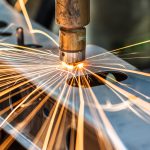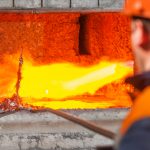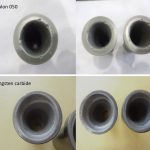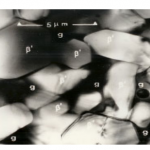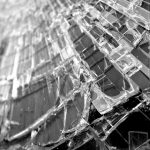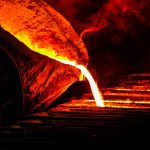International Syalons are pleased to announce the availability of Zircalon 30 a new grade of zirconia-based advanced ceramic with greatly improved fracture toughness, which is ideal for induction welding applications.
Continue readingCategory Archives: Uncategorized
Ceramic Materials in Defence Applications
The 20th Century was an era of rapid innovation in ballistics technology, and subsequently in how conflicts were conducted. Military organisations worldwide opted to improve the manouverability of troops and vehicles without compromising the performance of protective equipment in response to high velocity impacts. This led to the gradual adoption of novel ceramic materials in defence applications.Continue reading
Benefits of Silicon Nitride Milling Media
Advanced ceramic grinding media are on the cutting-edge of wearing applications. The right grinding balls can be used to break down analytical samples, industrial intermediates, and more, simply by applying continuous abrasive forces. Generally, the goal is to reduce the size of particles, or to blend heterogeneous materials together. This can be carried out with hydraulic and pneumatic systems. But the oldest, simplest, and often most effective method, is to repeatedly impact sample materials with a tougher milling medium, causing particles to decompose through mechanical attrition.
Continue readingFestive Holidays Notice
International Syalons (Newcastle) Ltd. offices will be closed from Friday 21st December until Thursday 3rd January.
Molten Aluminium Degassing using Sialon
Molten aluminium (Al) is an extremely reactive substance. The molten metal is so reactive that it will readily decompose water in the atmosphere, or moisture on wet tools, releasing hydrogen into the melt. Even small volumes of water condensing on a crucible furnace or transfer ladle can affect the quality of final castings. Excess hydrogen can affect the distribution of porosity, and the total amount of shrinkage, ultimately increasing scrappage. Eliminating gas absorption from molten aluminium is unfeasible. So, metallurgists tend to focus on preventing hydrogen introduction into the melt and removing as much as possible prior to casting.
The Story of Ceramics in the UK
Ceramics are still widely associated with the elegant yet brittle shapes of traditional manufacturing, despite the astronomic strides that materials scientists and engineers have made over the last two and a half centuries. This is primarily due to the schism between commercial and technical ceramic materials. Retail ceramics retain a flair for aesthetics over functionality, which has roots in Romantic-era pottery and ancient porcelain. These products retain that traditional sense of style and continue to dominate the general public’s perception of what ceramics are capable of.Continue reading
Advanced Engineering: Syalon 050 vs Tungsten Carbide Blast Nozzles
A car engine block can weigh anything from 90 kilograms (kg) to over half a tonne without its associated parts, such as the power train or other directly connected components. The weight of the vehicle is one of the defining factors in its overall performance and efficiency, and reducing the weight profiles of integral components has been an ongoing challenge for advanced engineering of modern vehicles.
Continue readingInsight into the Hardness of Silicon Nitride
At International Syalons, we have explored the mechanical properties of silicon nitride (Si3N4) at great length. Silicon nitride is an advanced engineering ceramic that circumvents many of the conventional drawbacks of numerous oxide ceramics. Outstanding fracture toughness and high moduli of both rupture and elasticity impart excellent resistance to multiple wearing phenomena. This enables silicon nitride-based ceramics to withstand severe operating conditions that may cause comparatively brittle ceramics to propagate flaws, deform, or fail.Continue reading
The Fracture Toughness of Ceramic Materials
High strength ceramic materials are pervasively utilized in demanding industrial applications, owing to their unique thermomechanical characteristics. Typically, advanced ceramics exhibit tightly-bound granular structures with extremely dense microstructural arrangements. This imparts varying levels of material strength and resistance to chemical attack, depending on the distinct chemical makeup of the ceramic.
Continue readingHigh strength ceramic materials are pervasively utilized in demanding industrial applications, owing to their unique thermomechanical characteristics. Typically, advanced ceramics exhibit tightly-bound granular structures with extremely dense microstructural arrangements. This imparts varying levels of material strength and resistance to chemical attack, depending on the distinct chemical makeup of the ceramic.
Continue readingExploring the Ultra-High Temperature Strength of Sialon Technical Ceramics
Updated: Originally published on 25/10/2018
Silicon nitride (Si3N4) ceramics have outstanding thermal shock resistance and ultra-high temperature strength values, exceeding many technical ceramics in terms of their resistance to thermodynamic stress. The main challenge associated with manufacturing silicon nitride for industrial applications is of cost-effectively achieving full densification of green bodies. Hot pressing methods yield fully dense, high-performance technical ceramics but at excessive costs.
Continue reading
